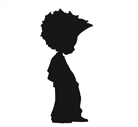1. Why did the IT group at Royal Caribbean have such poor performance and business status in the company?
-The IT group was made up of factions, and morale was terrible.
2. What are the top three factors in Tom Murphy's turnaround of the IT function at Royal Caribbean? Explain the reasons for your choices.
-The three factors
* RESPECT
*COMMUNICATION
*SILO-BUSTING
3. Visit the website of Royal Caribbean. Evaluate the effectiveness of the website and the services being offered to attract and serve the travel needs of customers and prospective customers. What could be improved? Outline the business impact of your idea.
- The Royal Caribbean is so great because we can reserve like passport and etc.

